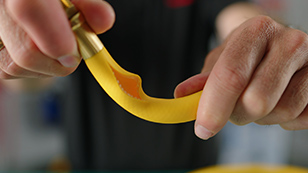Hoses

- …
Choosing the Right Air Hose: Material Insights for Optimal Performance
Understanding the characteristics of different materials is crucial in selecting the proper air hose for your compressed air system. Proper diameter and length will also contribute to optimal performance and increased product longevity.
Rubber Hoses
Rubber hoses are constructed from natural or synthetic rubber compounds, known for their flexibility and durability.
They resist temperature extremes, maintaining flexibility in hot and cold conditions.
They are highly resistant to abrasion, making them suitable for applications involving rough surfaces and heavy usage. They are compatible with air and water; some can also be used with oils and glycol.
Polymer Hoses
Polymer hoses are crafted from various synthetic polymers, offering a balance of flexibility, strength, and chemical resistance.
Polymer hoses typically offer superior flexibility, lightweight construction, and resistance to kinking, making them easy to handle and maneuver in tight spaces. They suit indoor and outdoor use and provide reliable performance in diverse environments.
Most models are compatible with air and water.
PVC Hoses
PVC (Polyvinyl Chloride) hoses are made from a thermoplastic polymer known for their affordability and versatility.
PVC hoses are well suited for light to medium-duty tasks. They are lightweight, flexible, and can withstand UV rays and chemicals. Our PVC hoses are certified under NSF-15 and Canadian Food Inspection Agency Standards.
Compatible with air and water.
Polyurethane Hoses
Polyurethane hoses are manufactured from a synthetic polymer, prized for its exceptional toughness and flexibility.
Polyurethane hoses resist abrasion, oils, fuels, and lubricants, ensuring reliable performance in demanding industrial environments. Their low friction coefficient reduces pressure drop and improves overall system efficiency.
They are flexible in extreme temperatures and resistant to oils, fuels, and solvents. They are an excellent choice for applications requiring frequent bending and flexing.
Reminder
If the hose you are using is cracked or broken, absorbs dirt, hardens in cold weather or softens due to heat, swells, or bulges, it might be time to replace it and reevaluate the type used. Remember that although price is always a factor, you will save more money in the long run with a hose suited to your needs.
Add a swivel fitting to one end to avoid twisting during use and an Air Fuse, Series 58 (HoseGuard®) for safety to prevent dangerous hose whips.













